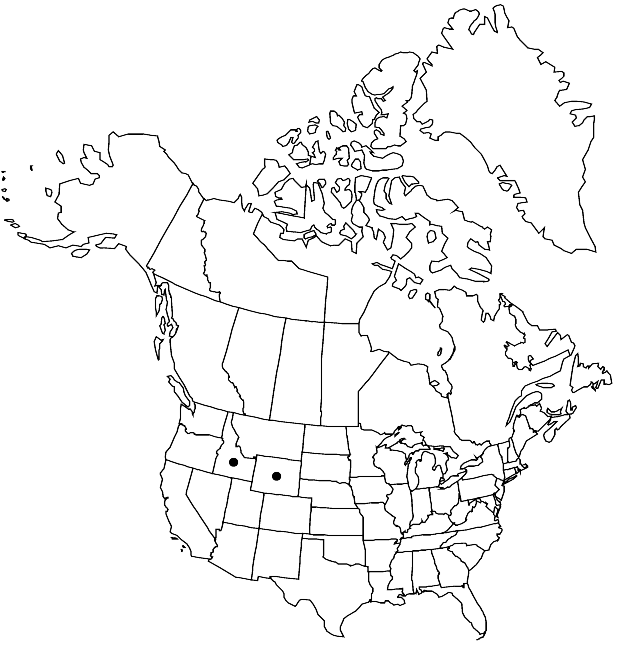Boechera saximontana
Harvard Pap. Bot. 12: 248. 2007.
Perennials; short-lived; apomictic; caudex usually not woody. Stems usually 1 per caudex branch, arising from center of rosette near ground surface, 0.7–3 dm, densely pubescent proximally, trichomes short-stalked, 2–6-rayed, 0.06–0.25 mm, glabrous distally. Basal leaves: blade narrowly oblanceolate, 1–3 mm wide, margins entire, ciliate near petiole base, trichomes (simple and spurred), to 0.4 mm, surfaces sparsely to densely pubescent, trichomes short-stalked, 4–8-rayed, 0.04–0.15 mm. Cauline leaves: 5–9, rarely concealing stem proximally; blade auricles to 0.3–1 mm, surfaces of distalmost leaves glabrous. Racemes 5–13-flowered, usually unbranched. Fruiting pedicels divaricate-ascending, straight, 3–8 mm, glabrous. Flowers ascending at anthesis; sepals pubescent; petals lavender, 4–5 × 0.5–0.8 mm, glabrous; pollen spheroid. Fruits divaricate-ascending, not appressed to rachis, not secund, straight, edges parallel, (2.5–) 3–4.7 cm × 1.2–1.7 mm; valves glabrous; ovules 78–112 per ovary; style 0.1–0.5 mm. Seeds uniseriate to sub-biseriate, 1.1–1.4 × 0.7–0.9 mm; wing continuous, 0.05–0.12 mm wide.
Phenology: Flowering Jun–Jul.
Habitat: Rocky soil in sagebrush and open conifer forests
Elevation: 2400-2900 m
Discussion
Boechera saximontana is an apomictic taxon that has been treated as a variety of either Arabis microphylla (R. C. Rollins 1941) or A. (Boechera) williamsii (Rollins 1993; R. D. Dorn 2001). It is easily distinguished from typical collections of those species (see M. D. Windham and I. A. Al-Shehbaz 2007b for detailed comparison), but it is likely that one (or both) were involved in its hybrid origin. It is known from Blaine, Custer, and Lemhi counties in Idaho, and Big Horn and Fremont counties in Wyoming.
Selected References
None.
Lower Taxa
"elongated" is not a number."thick" is not a number."dm" is not declared as a valid unit of measurement for this property.
